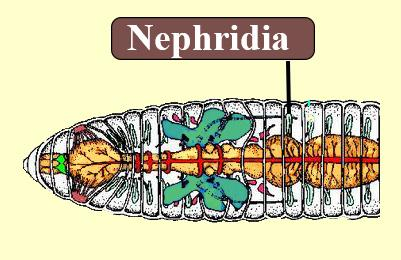
Which one of the following is correctly matched?
(a)Wings of the honey bee and crow- homologous
(b)Thorn of bougainvillea and tendrils of cucurbita- analogous
(c)Nephridia of the earthworm and malpighian tubules of cockroach- excretory
(d)Nictitating membrane and blindspot in the human eye- vestigial
Answer
470.4k+ views
Hint: The nephridium (plural nephridia) is an organ of invertebrates that exists in pairs and performs a function similar to the kidney of vertebrates. Nephridia extracts metabolic waste from the body of an animal. In several different lineages of invertebrates, they are present. Renal corpuscle, also known as malpighian body, vertebrate nephron filtration unit, functional kidney units.
Complete answer:
The organ that has the same origin but performs distinct functions is the homologous organ. The honey bee and crow wings are similar as they serve the same role. Where the homologous organs are the thorns of Bougainvillea and the tendrils of Cucurbita. The vestigial organ of the human eye, though not the blind spot, is a nictitating membrane. Whereas nephridia is the excretory organ of the cockroach's earthworm and malpighian tubule.
Additional Information:
Having the same or a similar relationship; as in relative position or structure, corresponding. Matching in form and origin, but not generally in function: a bird's wing and a horse's foreleg are homologous. Using the same alleles or genes: homologous chromosomes in the same order of structure.
To define something that is similar to something else and can be compared to another, use the adjective analogous. Analogous is a term used to refer to body parts in biology that have a similar purpose but vary in shapes, such as a bird's wings and an airplane’s wings.
Vestigial, meaning something leftover from a previous edition, is an adjective form of the noun vestige. In science, vestigial is used to identify objects such as animal organs, tissues, or bones that may have been used by an ancestor but no longer are.
So, the correct answer is ‘Nephridia of the earthworm and malpighian tubules of cockroach- excretory’.
Note: A type of excretory and osmoregulatory system found in certain insects, myriapods, arachnids, and tardigrades is the Malpighian tubule system. The system consists of branching tubules that absorb solutes, water, and waste from the surrounding hemolymph from the food canal.

Complete answer:
The organ that has the same origin but performs distinct functions is the homologous organ. The honey bee and crow wings are similar as they serve the same role. Where the homologous organs are the thorns of Bougainvillea and the tendrils of Cucurbita. The vestigial organ of the human eye, though not the blind spot, is a nictitating membrane. Whereas nephridia is the excretory organ of the cockroach's earthworm and malpighian tubule.
Additional Information:
Having the same or a similar relationship; as in relative position or structure, corresponding. Matching in form and origin, but not generally in function: a bird's wing and a horse's foreleg are homologous. Using the same alleles or genes: homologous chromosomes in the same order of structure.
To define something that is similar to something else and can be compared to another, use the adjective analogous. Analogous is a term used to refer to body parts in biology that have a similar purpose but vary in shapes, such as a bird's wings and an airplane’s wings.
Vestigial, meaning something leftover from a previous edition, is an adjective form of the noun vestige. In science, vestigial is used to identify objects such as animal organs, tissues, or bones that may have been used by an ancestor but no longer are.
So, the correct answer is ‘Nephridia of the earthworm and malpighian tubules of cockroach- excretory’.
Note: A type of excretory and osmoregulatory system found in certain insects, myriapods, arachnids, and tardigrades is the Malpighian tubule system. The system consists of branching tubules that absorb solutes, water, and waste from the surrounding hemolymph from the food canal.

Recently Updated Pages
Master Class 11 Economics: Engaging Questions & Answers for Success

Master Class 11 Business Studies: Engaging Questions & Answers for Success

Master Class 11 Accountancy: Engaging Questions & Answers for Success

Master Class 11 English: Engaging Questions & Answers for Success

Master Class 11 Computer Science: Engaging Questions & Answers for Success

Master Class 11 Maths: Engaging Questions & Answers for Success

Trending doubts
Draw a diagram of nephron and explain its structur class 11 biology CBSE

Why was the Vernacular Press Act passed by British class 11 social science CBSE

Differentiate between calcination and roasting class 11 chemistry CBSE

What is spore formation class 11 biology CBSE

Name the nuclear plant located in Uttar Pradesh class 11 social science CBSE

Nastic movement differ from tropical movement in being class 11 biology CBSE




